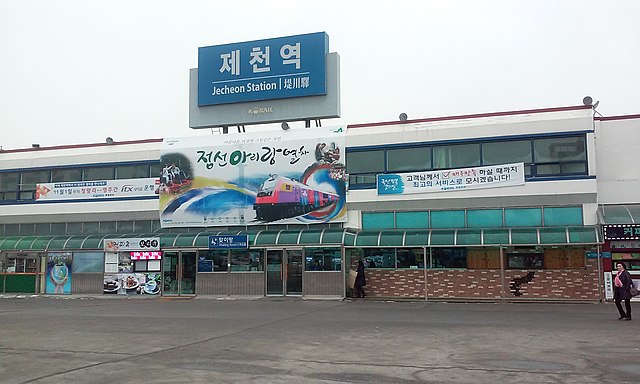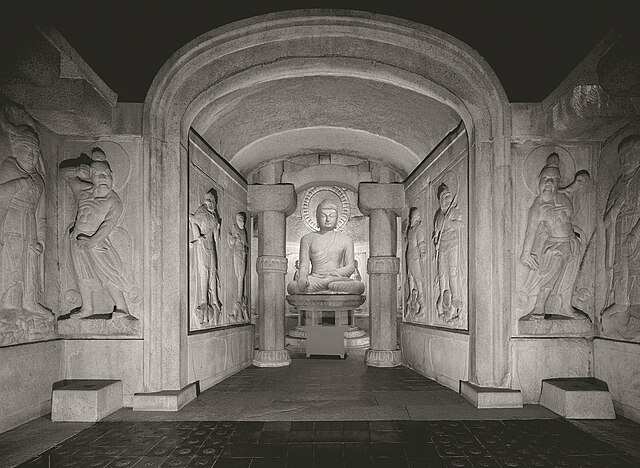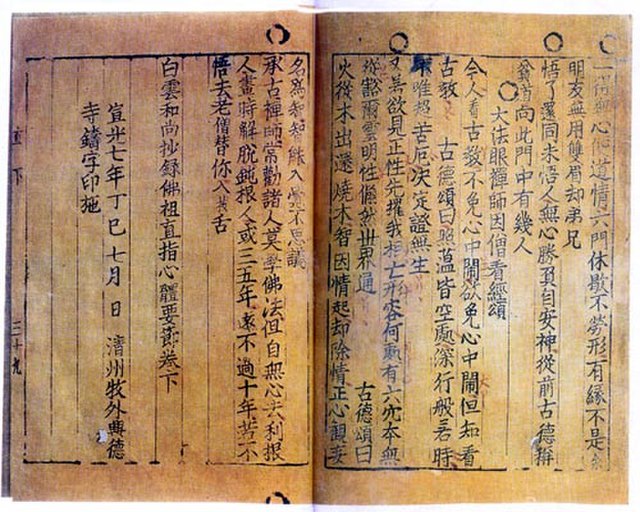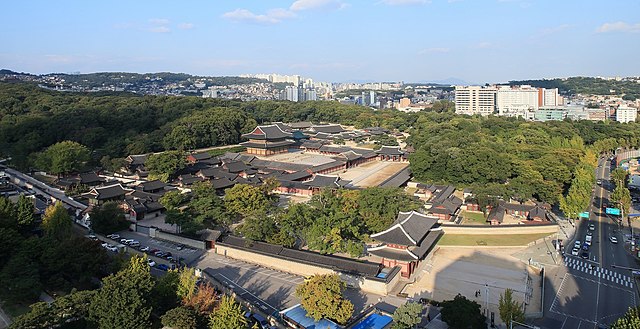Revised Romanization of Korean
Revised Romanization of Korean is the official Korean language romanization system in South Korea. It was developed by the National Academy of the Korean Language from 1995 and was released to the public on 7 July 2000 by South Korea's Ministry of Culture and Tourism in Proclamation No. 2000-8.
The sign with the name of the railway station in Bucheon — at the top, a writing in hangul, the transcription in Latin script below using the Revised Romanization, along with the hanja text
The sign with the name of the railway station in Jecheon — at the top, a writing in hangul, the transcription in Latin script below using the Revised Romanization and the English translation of the word 'station', along with the hanja text
South Korea, officially the Republic of Korea (ROK), is a country in East Asia. It constitutes the southern part of the Korean Peninsula and borders North Korea along the Korean Demilitarized Zone; though it also claims the land border with China and Russia. The country's western border is formed by the Yellow Sea, while its eastern border is defined by the Sea of Japan. South Korea claims to be the sole legitimate government of the entire peninsula and adjacent islands. It has a population of 51.96 million, of which roughly half live in the Seoul Capital Area, the ninth most populous metropolitan area in the world. Other major cities include Incheon, Busan, and Daegu.
Seokguram Grotto from the Silla era, a UNESCO World Heritage Site
The oldest surviving metal movable type book, the Jikji, was printed in 1377, and Goryeo created the world's first metal-based movable type in 1234.
The Tripitaka Koreana — the Buddhist canon (Tripiṭaka) carved onto roughly 80,000 woodblocks and stored (and still remaining) at Haeinsa, also a UNESCO World Heritage Site
Changdeok Palace, pictured in 2014, one of the Five Grand Palaces of Seoul built during the Joseon Dynasty and a UNESCO World Heritage Site






